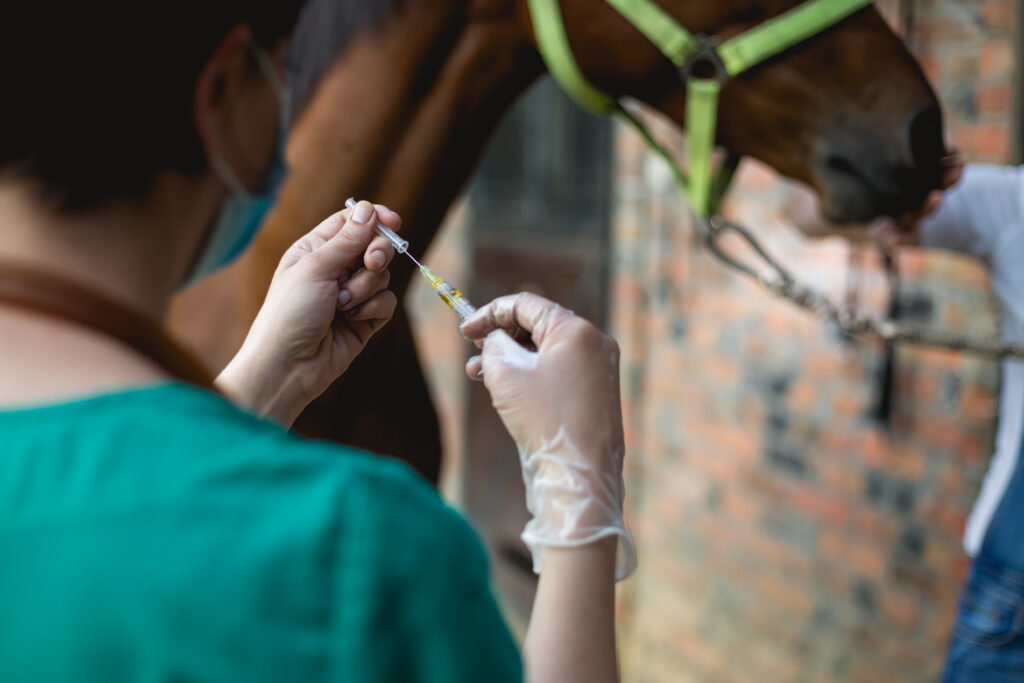
In 2022, the FDA conducted a study on the use of pentosan to control clinical signs associated with osteoarthritis (OA) in horses (the FDA approved Zycosan, a pentosan polysulfate sodium injection, on Dec. 20 the same year). Twelve veterinary practices across the United States participated in this research. Scott McClure, DVM, PhD, DACVS, DACVSMR, of Midwest Equine Surgery and Sports Medicine in Iowa, presented the takeaways from this research at the 2022 AAEP Convention.
What Is Pentosan?
Pentosan, derived from beechwood hemicellulose, was originally used as an antithrombotic agent for blood clots in humans. Its effect is only 1/6-1/10 that of heparin in humans, and it’s even weaker in horses. In the joint, pentosan is said to preserve proteoglycans, stimulate hyaluronic acid synthesis, and act as a fibrinolytic agent. In vitro studies demonstrate protection against free radicals and increases in insulin-like growth factors.
FDA Study on Pentosan Use in Horses
The multicenter FDA research for the approval process for pentosan was a negatively controlled, randomized, blinded field efficacy study. Horses included in the study had to be in good health, at least 2 years old, and have moderately advanced OA in one limb confirmed with radiologic evidence. Lameness presented as Grades 2-4. The horses had not had surgery, NSAIDs, or other treatment. The final study population included 219 horses ages 3-32.
During the 38-day study, researchers administered pentosan at 3 mg/kg IM once a week for four weeks. The control horses received saline. A previous study (McIlwraith et al.) at this dose demonstrated a significant decrease in articular cartilage fibrillation and an overall positive outcome in the histologic appearance of cartilage. There was also a positive outcome in lameness and joint flexion, as well as decreased cartilage degradation products in the synovial fluid.
In the multicenter study, there was 60% success in horses treated with pentosan compared to 36% in horses “treated” with saline only. The pentosan-treated horses also experienced significant decreases in globulin, neutrophils, white blood cell count, and total protein compared to the saline group. This indicates a significant decrease in whole-body inflammation. Fewer than 10% of horses experienced an adverse reaction at the injection site, such as edema, heat, pain, or redness.
Study Results
In summary, pentosan at 3 mg/kg once a week for four weeks significantly decreased lameness and was well tolerated. McClure reported that 60% success is notable because of the advanced nature of OA in horses enrolled in the study. There might be value in using this medication earlier in the disease process. In other countries, pentosan is being used prophylactically.
Related Reading
- Systemic and Intra-Articular Therapies for Lame Horses
- Fetlock Radiographs: No Association Between Lameness, Pathology
- 10 Radiographic Prepurchase Abnormalities in Sport Horses
Stay in the know! Sign up for EquiManagement’s FREE weekly newsletters to get the latest equine research, disease alerts, and vet practice updates delivered straight to your inbox.








